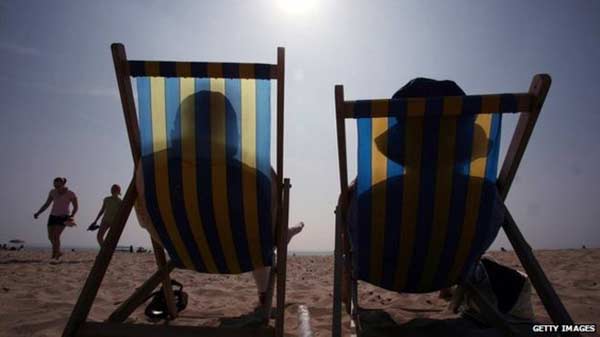
London, UK (BBN)-There is huge confusion over the labels on sun creams, and manufacturers should all use the same rating system, says the Royal Pharmaceutical Society.
A survey of 2,000 UK adults found one in five was unaware that the SPF rating does not mean protection against all sun damage - only that from UVB rays.
Protection against UVA rays is indicated by a "star" rating.
Ultraviolet A rays cause skin-ageing and wrinkles. Both UVB and UVA rays from the sun can cause skin cancer.
The protection provided by sun creams and lotions against UVB rays, which cause sunburn, is denoted by the SPF or factor on the bottle.
People should not have to pick their way through complicated dual ratings information to understand how sunscreen works
But there are also ultraviolet A rays (UVA) to consider too, which penetrate the skin more deeply, causing it to age - but only one in three checked the UVA star rating when buying sunscreen, the survey found.
When buying a sunscreen, you should look for the level of UVA protection (denoted by a UVA star rating) and UVB protection (denoted by the SPF).
The UVA star rating ranges from nought to five and indicates the percentage of UVA radiation absorbed by the sunscreen in comparison to UVB.
HOW DO SUNSCREENS AND LOTIONS PROTECT US?
'COMPLICATED'
Prof Jayne Lawrence, chief scientist for the Royal Pharmaceutical Society, said: "Clearly many consumers do not realise the SPF rating applies only to the amount of protection offered against UVB rays, not UVA rays - both of which can damage the skin and cause skin cancer.
"People should not have to pick their way through complicated dual ratings information to understand how sunscreen works and the amount of protection it potentially provides."
Prof Lawrence said it was time for sunscreen manufacturers to provide one easy-to-understand rating, based on a simple description of the total amount of sun protection offered: low, medium, high and very high protection.
Only 8 per cent of people surveyed knew that the SPF rating on the product label referred to protection from UVB rays only.
And one in four said they did not know what the SPF rating stood for at all.
Among those adults with children, 15 per cent admitted that they never checked the factor of the sun cream they used.
Cancer Research UK recommends applying two tablespoons of sunscreen every two hours when out in the sun in the UK.
Experts also advise people to stay in the shade between the hours of 11:00 and 15:00 or to cover up when out in direct sunshine between these times.
Overexposure to ultraviolet radiation is the main preventable cause of skin cancers - both malignant melanoma and non-melanoma skin cancers, Cancer Research UK says.
The sun is the main source of natural UV radiation but sun beds also produce artificial UV radiation.
A study in the British Journal of Cancer from 2011 estimated that 86 per cent of melanomas in the UK every year are linked to too much exposure to sunlight and sunbed use.
BBN/SK/AD